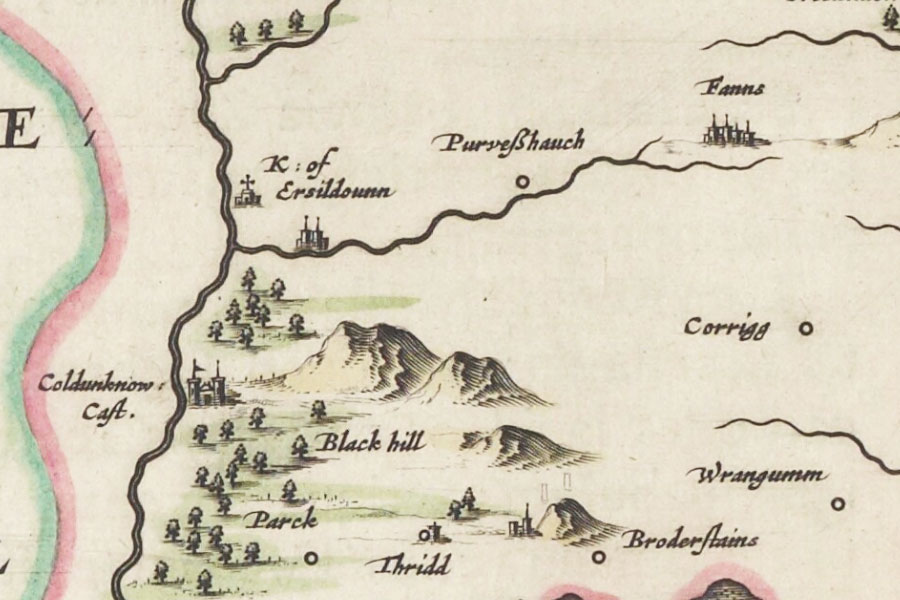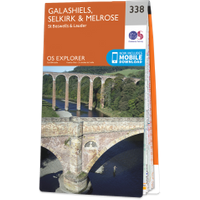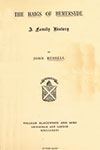

Joan Blaeu, Amsterdam, 1654
In the 17th century there was an “old fortalice” named Thrid, marked on Blaeu’s map of 1654 as “Thridd”, at what is now the farm of Third, although little is known of its history.
Thrid is a part of the lands of Bemersyde, standing at the north-east corner of the estate where it meets the neighbouring estates of Brotherstone, Whiterig and Smailholm. Bemersyde has been owned by the Haig family since at least the second half of the 12th century and probably earlier, with a Petrus or Peter de Haga mentioned in a charter of 1162 as the owner of the lands and barony of “Bemersyd”.
What form the castle took is unknown, but it may have been either a tower house or a bastle house in the style of some of its neighbours. The exact location is also unknown, but it was somewhere on the present farm of Third. A circular enclosure to the west of Third is thought to be prehistoric in date and so is probably not the location of the castle unless it reused earlier work. I have placed the site of the castle at the current farm house which stands on high ground, but it may have been located just off the crest where some of the farm buildings stand today.
A Thomas Cranstoun of Thrid witnessed a charter in 1554 by Robert Haig of Bemersyde resigning that estate to his son, Andrew, along with several other Haigs and residents of the Bemersyde estate suggesting perhaps that he was a vassal of the Haigs.
In 1646 David Haig, the 20th laird of Bemersyde, and his family moved into Thrid since Bemersyde was at that time occupied by his cousin Thomas Haliburton.
David was succeeded by his eldest son, Anthony, in 1654, against the backdrop of the religious Wars of the Three Kingdoms. Anthony became a Quaker in 1657 and following the Restoration he was imprisoned in 1663 for his religious beliefs in the Tolbooth in Edinburgh and latterly in Edinburgh Castle. He spent four years and four months in prison and was finally released in December 1667, returning to live at Thrid.
Anthony had Thrid remodelled in 1672, expanding five slits and gunloops to form glazed and latticed windows, and laid out new gardens. A rectilinear enclosure has been identified in cropmarks to the south-east of the southernmost farm building at Third, but whether or not this was associated with the garden or castle is unknown. In the same year Anthony wrote a detailed inventory of all the possessions and household goods at Thrid.
In 1680 Anthony paid off his debts to the Haliburton family and moved his family into Bemersyde. Anthony’s eldest surviving son Zerubabel, following his marriage to Elizabeth Gordon, moved into Thrid in 1698. Upon his father’s death in 1712 Zerubabel moved to Bemersyde and let Third to a tenant. The family seemingly was still under the burden of some debt and in 1729 Zerubabel proposed to sell Thrid, although a lull in the property market meant a sale was not achieved.
The Bemersyde estate, including Thrid, passed to Zerubabel’s only son, James, in 1732. Later, possibly in the second half of the 1760s, he sold Thrid to his cousin Isaac Haig, but when Isaac died without an heir in 1773 Third reverted to James.
What became of the “old fortalice” of Thrid after this is not known, but it’s conceivable that it may have served as a farmhouse for a relation or tenant before eventually being replaced with new farm buildings.
Alternative names for Thrid
Third; Thridd











